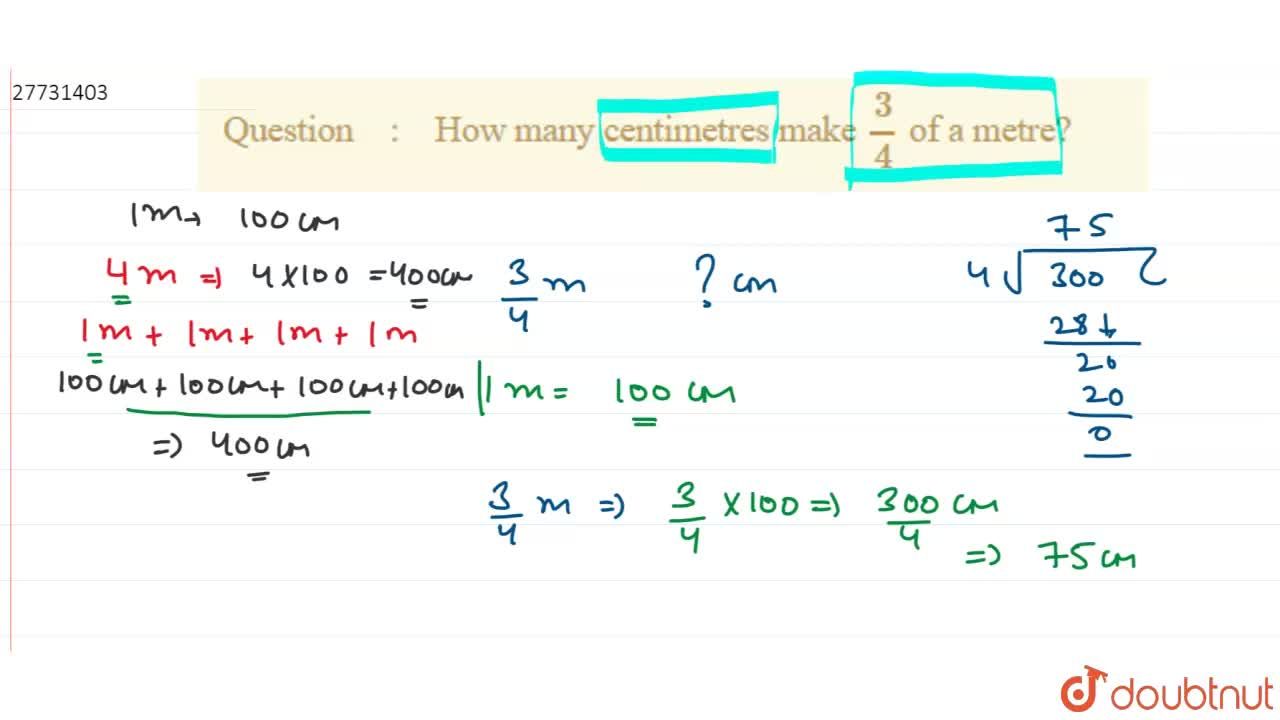

#HOW MANY CENTIMETERS IN A METER HOW TO#
How to Convert Meters to Centimeters- The formula for Converting Meters to Centimeters This unit is 100th of a meter or let’s just say that it is 100 centimeters make 1 meter.

What is Centimeters?Ī centimeter, just like meter, is a unit of length that comes from the SI systems of the unit. This term is written as m or metres or meters. It can also be understood as 100 centimeters or roughly, 1 yard. What is Meter?Ī meter refers to the basic unit of length in the group of SI systems of the unit. Let us begin with the section by learning the workings of meter and centimeters and what means in another. If you are one with the same confusion then this section is for you. While converting one to another comes very handy, not everyone is armed with the knowledge of how it works. One of such couples in units is meter and centimeter which make the basic units of length in the SI systematics of units. However, when it comes to the metric units, we have got to admit that the conversion gets necessary at times. Sometimes, it is just not that plain-sailing to express one unit in another.

One imperial foot is equal to approximately 30.5cm.The cornea of a human eye is approximately 1.15cm (11.5 mm) diameter.A United States nickel (5 cent) coin is approximately 2cm diameter.From this we derive the centimetre as the distance travelled by light in a vacuum in 1/2997924580 of a second.ĭefined at the 17th Conférence Générale des Poids et Mesures (CGPM) Most recently, in 1983, the 17th conference defined the meter as “the distance travelled by light in a vacuum in 1/299792458 of a second”. This standard has since been superseded by more accurate measures –first by the 11th conference of weights and measures, who defined the meter as “1,650763.73 wavelengths of the orange-red emission line of a krypton-86 atom in a vacuum”. This new value was used to create a metal bar stored at the BIPM’s headquarters known as the “international prototype meter”. Because of this, the Academy of Sciences devised a new measure, 1/10000000 of the distance from the Equator to the North Pole (measured through Paris). It was later found there is a slight difference in this length around the world. a pendulum that made half an oscillation per second – as he believed this would have a fixed length. He proposed using the length of a “seconds pendulum”. John Wilkins was the first person to publicly recognise the need for a universal length measurement, ie a measurement that could be carried out locally to avoid having to have a definition that refereed to a stored reference unit. Using the metre as the basis for length measurements, the system is now used officially across the globe. The metric, or decimal, system of weights and measures was defined and adopted in France in 1795. The centimetre is a unit of length in the metric system, equal to one-hundredth of a metre. There are a few exceptions, most notably the United States, which still primarily uses the U.S. The centimetre is used worldwide as a measurement of length.


 0 kommentar(er)
0 kommentar(er)
